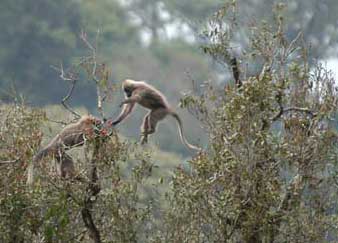A monkey species discovered in the high forests of Tanzania last year has such unique characteristics that it has been classified into an entirely new genus – the first time in 83 years.
 |
| Rungwecebus kipunji has been classified into a new genus. (Photo: LiveScience) |
In the classification system, a genus is ranked below a family and above a species.
“The discovery of a new genus in one of the most studied groups of mammals once again reminds us of the limited knowledge we have gathered about Earth’s diversity“, said Link Olson, a member of the research team from the University of Alaska Museum.
Initially, this African monkey species, scientifically named Rungwecebus kipunji, was classified within the Lophocebus group based on photographs taken by the Wildlife Conservation Society (WCS).
However, when one was caught and killed in a farmer’s trap, researchers had the opportunity to study it directly. Analysis of its body structure and DNA showed that this species is so distinct that it deserves to be placed in a separate genus. The last time a new genus of monkeys was discovered was in 1923, with the Allen’s swamp monkeys in the Congo Basin.
Kipunji has a brown-gray color and a “crown” of upright hair on its head, long cheek whiskers, and a cream-colored belly and tail. It stands about 1 meter tall and produces a strange low call described as a “whistle-bark.” Its thick and long fur allows it to survive at altitudes above 2,000 meters above sea level, where temperatures often drop below freezing.
Kipunji monkeys live in groups of 30 to 36 individuals, both males and females. Eagles and possibly leopards are their primary enemies, but humans also hunt this monkey for meat. Currently, there are only about 500 individuals left in the wild, and they are likely to be classified as “critically endangered,” needing urgent conservation efforts.
T. An


















































